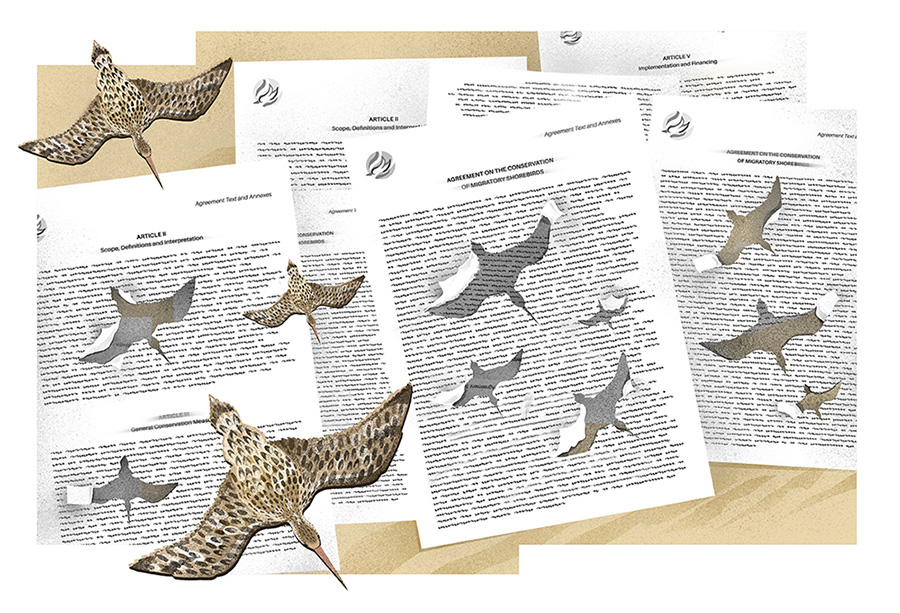The United Nations Sustainable Development Goals (SDGs) are a global call to action. Together, the 17 SDGs provide a blueprint for building a more equitable and sustainable future, broken down into targets with indicators to measure progress towards meeting them.
The deadline for achieving the SDGs is 2030, but with only eight years to go, there is still much to be done. Many of the challenges we face are complex and require coordinated efforts across different sectors—such as governments, private industry, and academia—to meet these goals that are key for sustaining life on the planet.
While each SDG focuses on a different topic, many are interconnected, which should help to build bridges across disciplines. After all, protecting biodiversity and promoting human well-being are inextricably linked, so conservation offers an important pathway to multidisciplinary action. However, because activities involving nature fall most directly under Goal 14, “Life Below Water,” and Goal 15, “Life on Land,” the SDG framework effectively limits the perceived contribution of conservation to these two ecological goals. This is a misconception. If the co-benefits of conservation are made more visible within the framework, we can more effectively support activities that have the potential to achieve numerous targets across the 17 SDGs.

Using conservation science to serve both people and nature is the philosophy behind the Smithsonian Institution Working Land and Seascapes (WLS) Initiative, which supports 14 projects across 13 countries. WLS members have aligned with a broader movement to approach conservation planning and action holistically, fostering a common vision of healthy and productive mosaics of ecosystems and human uses.
A recent effort to “map” the network to the SDGs provides a case study for conservation organisations looking to collaborate around shared global goals. The mapping process allows projects to identify how their work contributes to each of the SDGs, exemplifying the broader implications of conservation research and actions to the sustainable development framework.
Mapping of WLS projects was conducted using the World Business Council for Sustainable Development roadmap framework, an open access resource that organisations and sectors can use to map their activities to the SDGs. Researchers reviewed all SDG targets and identified WLS conservation project outputs that aligned, creating “matches” between conservation outcomes and SDG targets. Each match was confirmed with a verifiable source. This exercise revealed that the WLS network’s activities contribute to all but one of the 17 SDGs and nearly half of the 169 targets, highlighting how conservation actions have wide-ranging impacts.
For example, the Smithsonian Tropical Research Institute Agua Salud Program conducts reforestation and mixed land-use experiments in the Panama Canal Watershed, contributing to 11 SDGs. This type of work is key for ecosystem restoration and climate change mitigation efforts, but Agua Salud’s findings also help local communities reduce flood risks and reap more economic benefits from sustainable forest management.
Multiple research efforts of the National Museum of Natural History are focused on marine protected areas throughout the Meso-american Reef, along the Caribbean coasts of Mexico, Belize, Guatemala, and Honduras. The Marine Conservation Program and the Healthy Reefs for Healthy People Initiative work with partners to support community-led decision-making, from building resilience to extreme weather and climate change to providing sustainable income sources and food security. As a result, these projects align with multiple targets across 14 SDGs.

Activities of the Smithsonian National Zoo and Conservation Biology Institute Gabon Biodiversity Program also contribute to 14 SDGs. Partnering with private industry and the government, their biodiversity research and anti-poaching measures are augmented by social science studies and educational outreach. This strategy addresses the socio-economic challenges that are often both cause and consequence of environmental destruction, supporting local communities throughout their transition to more eco-friendly and productive land-use practices.
These are just a few cases where synergies between conservation research and human well-being can be found in the WLS portfolio, and there will be plenty more across the entire conservation sector. It can be difficult for organisations which are focused on different disciplines to “speak the same language”, creating a gap between efforts that may be more effective when combined. The mapping process allows us to understand where conservation can have the greatest impact, identifying contributions that achieve both nature-related SDGs and those seemingly beyond their scope.
By placing our work within a globally accepted framework, we aim to draw attention to how and where collaborations across sectors are required to reach SDG targets. By making the value of nature-based conservation interventions more visible to other sectors—as well as the co-benefits that come from working together—we can have more meaningful discussions about what we have in common and how we can put those principles into action.
We cannot waste any time or resources if we are to achieve the SDGs by 2030. By more purposefully coordinating our actions and incorporating conservation into the sustainable development framework, we have a better shot at overcoming the challenges threatening our shared future.
Original paper
Canty, S. W., A. J. Nowakowski, G. M. Connette, J. L. Deichmann, M. Songer, R. Chiaravalloti, M. Dodge et al. 2022. Mapping a conservation research network to the Sustainable Development Goals. Conservation science and practice 4(7): e12731. https://doi.org/10.1111/csp2.12731.






